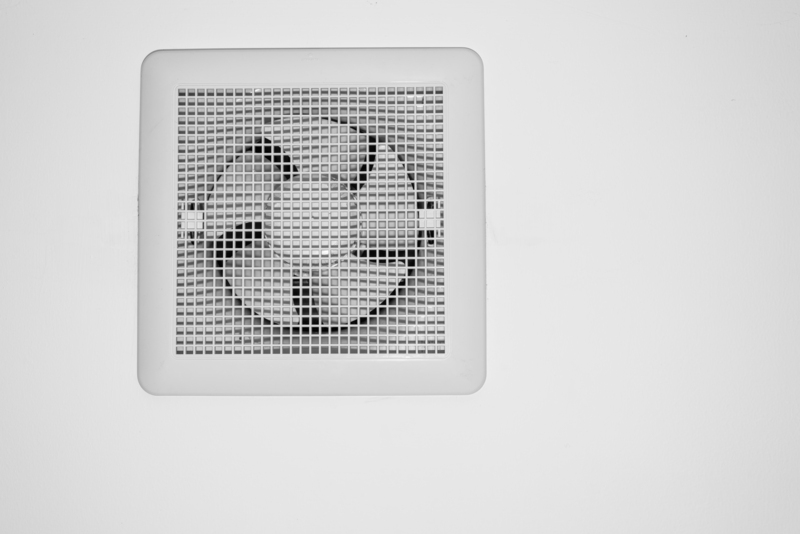Refreshing Living Spaces with Quality Air
Posted on 19/09/2025
Refreshing Living Spaces with Quality Air
As we spend most of our lives indoors, *ensuring the quality of the air we breathe at home* is more crucial than ever. Refreshing living spaces with quality air not only elevates our sense of comfort, but also significantly impacts our overall health and well-being. In this thorough guide, we will explore effective strategies and cutting-edge solutions to achieve and maintain clean, fresh air throughout your home.
Why Focus on Indoor Air Quality?
Many homeowners overlook the vital importance of indoor air quality (IAQ). Unlike outdoor air, which is regularly circulated and filtered naturally, indoor air can become stagnant and polluted, leading to health issues ranging from respiratory discomfort to long-term chronic illnesses.
- Allergy Reduction: Pollutants, allergens, and dust particles are commonly trapped indoors.
- Respiratory Health: Poor air quality can exacerbate asthma, bronchitis, and similar conditions.
- Overall Well-being: Breathing purified air improves sleep, mood, and productivity.

Common Household Air Pollutants
Household air pollution comes from a wide array of sources. Understanding what contaminates your indoor environment is the first step towards refreshing your living space with high-quality air.
- Volatile Organic Compounds (VOCs): Emitted from paints, cleaning products, and furniture.
- Dust and Pollen: Common in carpets, bedding, and upholstery.
- Mold Spores: Thrive in humid environments and can trigger allergic reactions.
- Pet Dander: Tiny flecks of skin shed by furry pets.
- Tobacco Smoke: A major source of indoor air toxicity.
How Poor Air Affects Daily Life
Sub-par air quality leads to a range of problems--including minor annoyance and severe health risks:
- Headaches and Fatigue: High levels of carbon monoxide or chemical fumes can cause persistent headaches or tiredness.
- Increased Allergy Symptoms: Dust, mold, and pet dander can irritate eyes, nose, and throat.
- Sleep Disturbances: Polluted air can hinder restful sleep, impacting energy and focus during the day.
- Long-Term Health Conditions: Prolonged exposure to poor air may result in heart disease, respiratory issues, and even cancer.
Top Methods to Refresh Living Spaces with Quality Air
Transforming your home into an oasis of fresh, clean air is easier than you think. Let's explore the best approaches, from simple habits to advanced technology, for improving indoor air quality.
1. Ventilation: The Foundation of Fresh Air
Good ventilation removes stale air and replaces it with cleaner air from outside. Strategies include:
- Open Windows and Doors: Create cross-ventilation on pleasant days to quickly refresh indoor air.
- Use Exhaust Fans: Place them in kitchens, bathrooms, and laundry rooms to expel humid, polluted air.
- Install Air Vents or Tricklers: Modern apartments benefit from mechanical ventilation to maintain steady airflow.
2. Houseplants: Nature's Air Filters
Houseplants do more than just beautify your home--they can actually purify the air by absorbing toxins and releasing oxygen. Consider these low-maintenance options:
- Spider Plant: Effective against formaldehyde and benzene.
- Peace Lily: Battles mold spores and increases humidity.
- Aloe Vera: Absorbs VOCs, easy to care for, and doubles as a healing agent for burns.
- Snake Plant: Continues to produce oxygen even at night--perfect for bedrooms.
Remember, some houseplants can be toxic to pets, so always check before purchasing.
3. Air Purifiers: Modern Solutions for Fresh Living Spaces
Air purifiers are one of the most reliable ways to ensure consistent air quality improvement indoors. They work by removing airborne contaminants using various technologies:
- HEPA Filters: Trap over 99% of airborne particles, including dust, pollen, and bacteria.
- Activated Carbon Filters: Absorb odors, gases, and VOCs for a fresher environment.
- UV-C Purifiers: Use ultraviolet light to neutralize bacteria, mold, and viruses.
Choose an air purifier scaled for your room size, and replace filters as recommended for optimum performance.
4. Regular Cleaning for Dust-Free Spaces
One of the simplest ways to new levels of air quality in your living space is by routine cleaning:
- Vacuum Carpets and Rugs: Use a HEPA-filter vacuum to trap dust and allergens.
- Launder Beddings and Upholstery: Wash sheets, pillowcases, and curtains weekly.
- Wipe Surfaces: Dust shelves, furniture, and electronics regularly with a damp cloth.
- Declutter: Minimizing clutter reduces dust accumulation and makes cleaning easier.
5. Control Humidity for Superior Air Quality
High humidity encourages mold growth, while overly dry air causes discomfort. *Maintaining balanced indoor humidity (between 30%-50%)* is key to refreshing your living space with healthy air.
- Use Dehumidifiers: Especially useful in basements and bathrooms.
- Fix Leaks Immediately: Prevents mold and mildew buildup from damp conditions.
- Vent Appliances: Make sure dryers and stovetops vent outside.
- Use Humidifiers (in dry seasons): Adds moisture when indoor air gets too dry, reducing irritation of airways.
6. Reduce Use of Chemical Pollutants
Many common products silently contribute to indoor air pollution. Take these steps to minimize exposure:
- Choose Natural Cleaners: Vinegar, baking soda, and lemon are effective alternatives to harsh chemicals.
- Opt for Low-VOC Paints and Finishes: Select products labeled "Low VOC" for painting or renovating your home.
- Avoid Aerosol Sprays: Use solid or liquid air fresheners, but beware of added perfumes.
- Store Chemicals Carefully: Keep household chemicals tightly sealed and stored away from living spaces.
Innovative Technologies for Quality Indoor Air
In the era of smart homes and the Internet of Things (IoT), advanced technologies are making it easy to sustain quality air in your living spaces.
Smart Air Quality Monitors
These compact devices track airborne particles, humidity, carbon dioxide, and VOCs in real time. Many can send alerts to your smartphone and suggest actions to take when air quality dips.
Automated Ventilation Systems
Whole-house or apartment-sized systems automate airflow based on real-time data, ensuring that air is continuously refreshed and filtered without manual intervention.
UV-C and Ionization Technology
Ultraviolet light built directly into HVAC systems can help kill airborne mold and bacteria, while ionizers reduce static and make particles easier to trap in filters.
Integration with Smart Home Systems
Imagine air purifiers, humidifiers, and monitors all connected and responding together--adjusting in response to outdoor pollution alerts or the presence of people in the home. This is becoming increasingly common, maximizing both convenience and air quality control.
Practical Tips: Everyday Habits for Fresh Air
Beyond devices, day-to-day habits make a substantial difference in maintaining premium air quality in your home:
- Remove Shoes: Keep outdoor dirt, pollen, and chemicals out by having a shoes-off policy inside.
- No Smoking Indoors: Ensure tobacco smoke is never allowed in living spaces.
- Groom Pets Regularly: Reduces shedding and dander that can lower air quality.
- Move Furniture Occasionally: Prevents dust and mold from hiding underneath.
- Change HVAC Filters: Regularly replace furnace and air-conditioner filters to ensure peak air filtration.
Special Considerations for Urban Living
City dwellers face unique challenges, with higher outdoor pollution levels seeping indoors. Here's how to keep your urban home's air as fresh as possible:
- Close Windows During High Pollution Hours: Stay updated on air quality indexes (AQI) and keep windows shut when pollution peaks.
- Use Purifiers with Activated Carbon: Especially effective against car exhaust and city smog.
- Seal Gaps: Weatherproof doors and windows to prevent outdoor contaminants from entering.
- Create Green Barriers: Balcony and window planters with dense foliage can help filter dust and pollutants.

Refreshing Living Spaces: Quick Checklist
- Assess your current indoor air quality with monitors or sensors.
- Ventilate rooms twice daily for at least 10-15 minutes.
- Incorporate air-purifying plants strategically around your home.
- Invest in a reliable air purifier with a HEPA and activated carbon filter.
- Set a cleaning schedule focused on dust and allergen reduction.
- Maintain humidity with humidifiers or dehumidifiers as needed.
- Switch to natural, low-toxicity products wherever possible.
Conclusion: Breathe New Life Into Your Home
Refreshing living spaces with quality air is not just about comfort--it's about creating a wholesome environment for yourself and those you care about. By combining practical habits, natural solutions, and smart technologies, any home can be transformed into an oasis of clean, refreshing air.
Start today--take small, actionable steps to improve your indoor air quality. The benefits to your health, happiness, and peace of mind will be evident, making every breath you take indoors a revitalizing experience.
Ready to Refresh Your Living Space?
Explore more about air quality improvement solutions, and transform your home into a sanctuary of purity and well-being. Make quality air a priority, and enjoy a healthier, happier living environment today!




